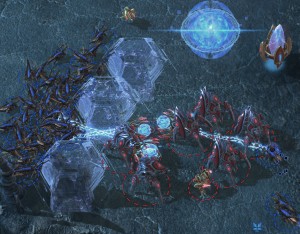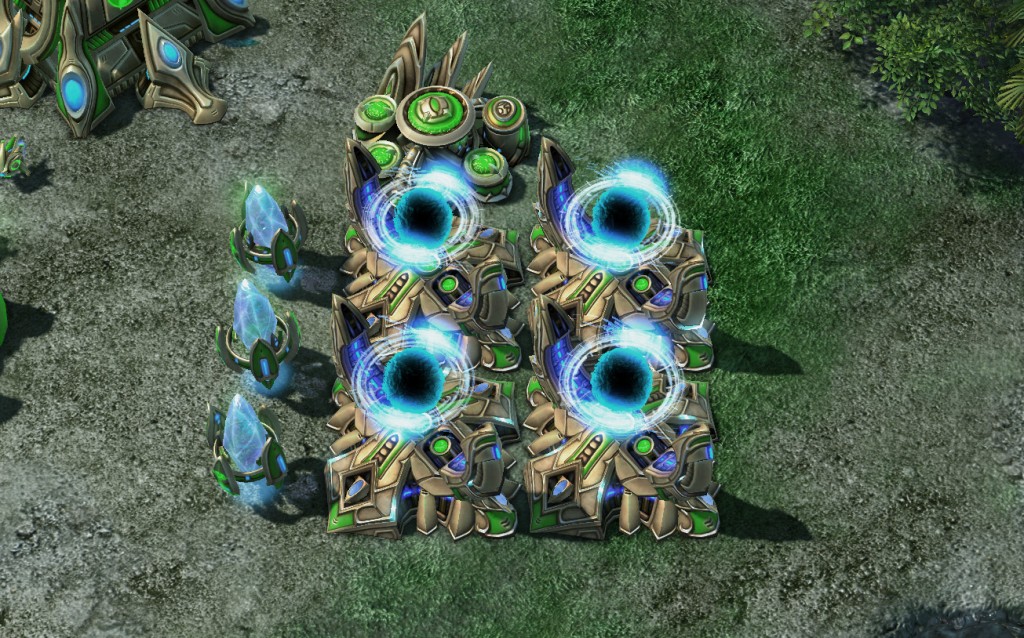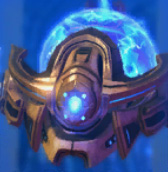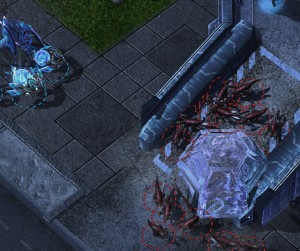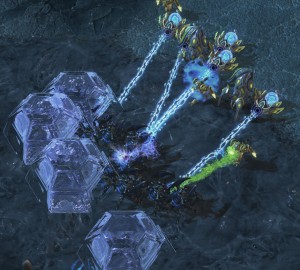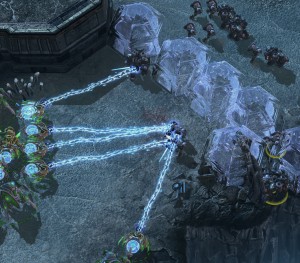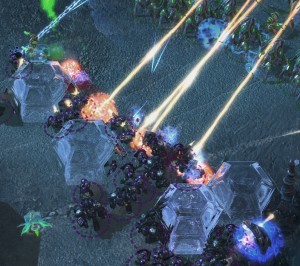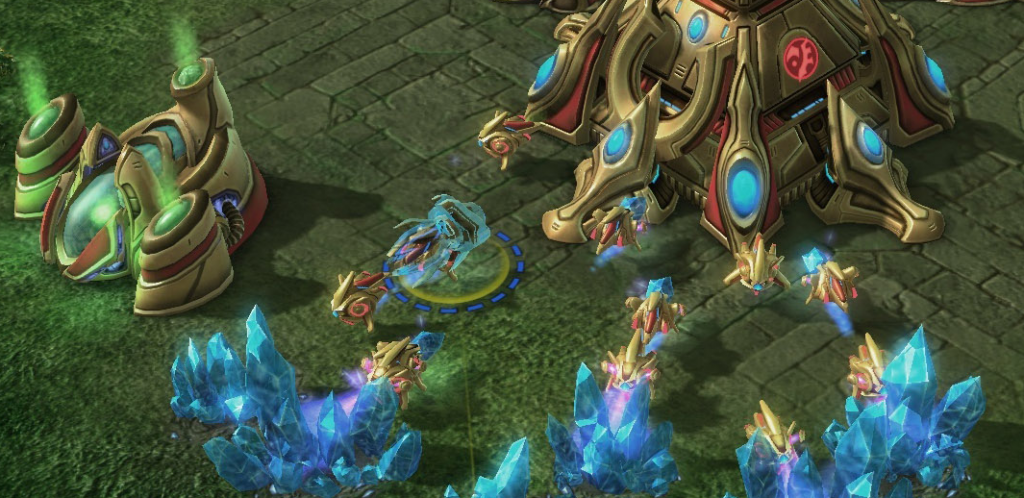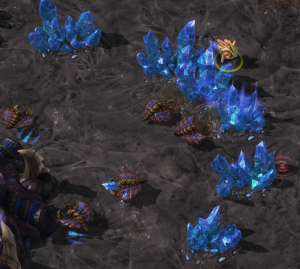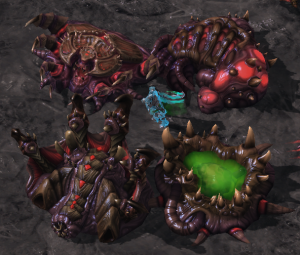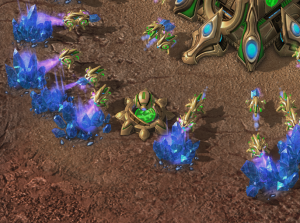In this article we look at the 4 Gate in PvP, how to identify it, how to defend it and how to gain an advantage and transition.
Being a Protoss who wants a long PvP is a hard life. The Warpgate mechanics that make Protoss so unique and fun to play also makes for a very powerful timing attack – the Four Gate. The Four Gate gives a large flood of units early in the game and allows for an aggressive early game that can damage an opponent greatly or kill them outright. It is relatively simple to execute (although difficult to perfect) making it very popular and very hard to deal with, especially for newer players.
In fact the Four Gate can become a nightmare for some players making them dread the PvP matchup which is a shame as there is a lot of fun to be had in the Protoss vs Protoss late game. In this article I will go through how to identify a Four Gate, how to stop it and how to transition after the attack has been defended.
Scouting the Four Gate
Scouting is the most important part of beating a Four Gating player. Effective scouting will allow you to identify that they are Four Gating, gauge the type of Four Gate they are doing and kill the proxy Pylon and Probe.
Signs of a typical Four Gate:
- Nexus has high energy – After two Chrono Boosts are spent on Probes the Four Gating player will save up energy to Chrono Boost the Warpgate Research. This is true for all all Four Gates as the faster the research finishes the stronger the attack will be.
- Missing Pylons – Count the number of Pylons in your base then count his. Is one of his missing? It is likely hidden somewhere near your base so that your opponent can Warp units in. Although this is a common sign of a Four Gate it could also be an indicator of a hidden tech build such as Stargate or DTs.
- Stalker and Probe (and possibly a Zealot) moving out together – This is the best but latest indicator of an incoming Four Gate. The opponent will move towards your base with these units and then build a Pylon to reinforce his attack.
Signs of a ‘Korean Four Gate’ (Pure Zealot):
- Your opponent has removed Probes from the Assimilator – He has mined enough gas for Warpgate Research and then has stopped in order to get as many minerals as possible. As soon as you see this indicator be on the lookout for the next one.
- Pylons in your base – This one is kind of obvious but sometimes it can be mistaken for a Cannon Rush. The opponent will put 4-6 Pylons in your base in areas that are hard to deal with.
Indicators of the type of Four Gate:
- Gateway is down much earlier than yours – Assuming you have built your Gateway on 12 or 13 supply this means that your opponent has likely put their Gateway down on 10 supply. This Four Gate Variant hits earlier but is much less economic to the point fo being almost ‘All-in’.
- Two Assimilators – This is uncommon in PvP, however, if you have scouted that it is definitely a Four Gate then this means that your opponent will be building a lot of Sentries or plans on transitioning into a tech build. In this case the Four Gate may be defensive and an attack will not come.
There are two sides to scouting in PvP. Firstly, identifying the Four Gate, and, secondly, map control to spot Probes and Pylons.
Initially you want to look for the above indicators by sending a Probe to your opponents base on 9 or 13 supply. Sending the Probe on 9 is safer but is less economic then sending it on 13. Poke around their base for as long as possible to get as much information as possible. Once they start building their first Stalker it’s a good idea to pull your Probe back.
Once you have identified that the Four Gate is incoming its important to begin having as much map vision and control as possible. Check around your natural expansion with your Zealot and send you Stalker to scout around the map and to check the opponents front. Try to hold the Xel Naga towers as much as possible as this will help you spot the Probe on its way to build a Pylon. If you can spot that and kill it you will gain a huge advantage. Hold map control and the Xel Nagas until the very moment your opponent moves out then give up map control and head back to your base to prepare.
Stopping the Four Gate
The following is assuming you are defending with 3 Gateways or a defensive 4 Gate. The following will also work with an Immortal-based defence except you will be unlikely to have as much early map control. Other builds that are specifically designed to defeat a 4 Gate will have their own methods but more often than not they will revolve around the same principles.
Before 5:50
Being active with your initial units is crucial. Send your Zealot to check for proxy Pylons near your Natural and send your first Stalker to check the Xel Naga towers and try and intercept any Probes.
If you encounter any of his units converge all of yours and try to kill them, even doing a small amount of damage will help you a lot. Be cautious not to lose anything yourself, if he outnumbers you (particularly in Stalkers) give up map control and pull back to your ramp.
If you are planning on defending with Immortals you will likely have more Zealots than Stalkers and your map control will be limited at this point, keep your Zealots near your ramp.
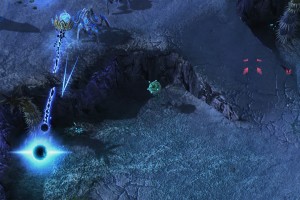
After spotting the Probe follow it and deny the Pylon
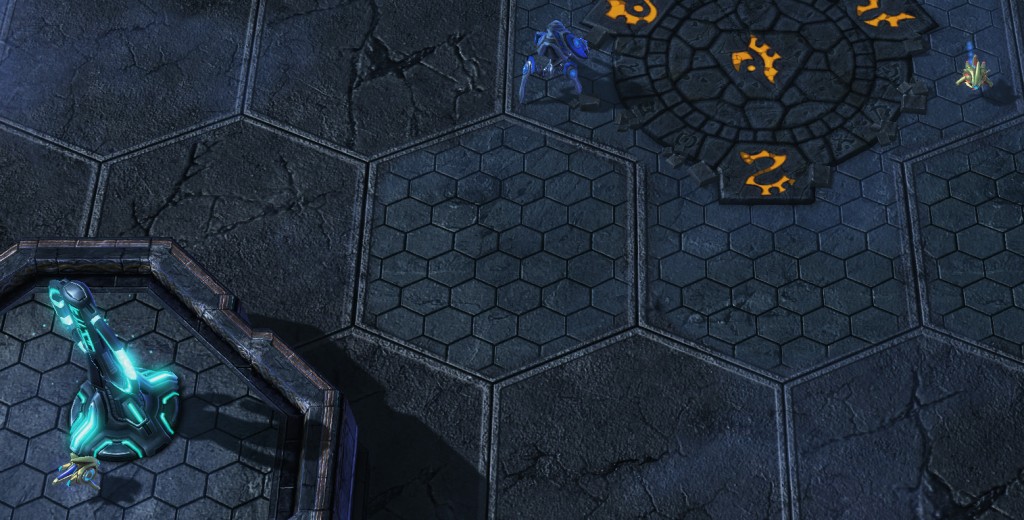
Holding the Xel Naga will often help you spot the Probe heading to Proxy.
After 5:50
Once you have pulled back to your ramp arrange your units in an arc at the top. Make sure you position some Stalkers to prevent Pylons from being warped in. I find it extremely helpful to put all of my units on ‘Hold’ as this prevents them from being baited down the ramp and allows you to focus on macro and Force Fields.
It is extremely important to always have a Force Field available to block your ramp. If your Sentry is low on energy always preference warping in another Sentry over a Stalker. Six Sentries are able to Force Field a ramp perpetually but it is unlikely that you will get to this point defending a 4 Gate.
If you can split his units as they try to move up the ramp and kill one or two Stalkers each time you will get ahead on Stalker count very quickly. This puts you in an excellent position if he pulls back. If he continues to try to win with the 4 Gate you can just keep Force Fielding and gaining small advantages.
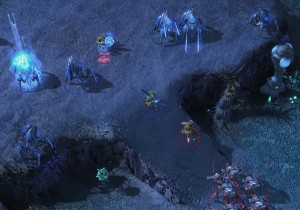
Units on Hold at the top of the ramp.

Cutting a small amount of units with the FF maximizes your defenders advantage.
Transitioning with an Advantage
After defending a 4 Gate you should have at least one of the following advantages:
- Economy/Probe advantage,
- Gas/Technology advantage,
- Unit advantage.
Keep in mind whilst defending how you can work towards these advantages. For example, in a defensive 4 Gate situation you should be aiming for a slight Probe advantage by building a few as you defend. You should also be trying to get the Unit advantage by cutting his army on the ramp while not losing too many of your own units.
In a defensive 3 Gate situation you should be getting as much gas as possible and maximizing your Stalker count while remaining safe with as few Sentries as possible. The extra gas you have collected can then be used to transition to Blink Stalkers, a Robotics Bay or a Starport.
Other openings will have one of the above advantages as its main goal. It is important that you identify this and think about how you can work towards that goal.
In the Protoss vs Protoss early game you will have to be comfortable gaining and keeping a very small advantage. Having a few extra Probes or a bit of extra Gas will secure you a long-term victory but it can be easy to lose that advantage if you try to move too quickly. Holding a small advantage is more important then gaining a large advantage or even getting a quick kill.
Things to Note
No matter which build you are using the smooth execution of your opening will play a big role in your success. Early supply blocks will result in a loss when facing a 4 Gate (or any rush for that matter). As such, it is important that you practice your opening against the AI or a friend until you can do it without any errors. Remember, it will be a lot harder to perform a flawless opening when you are being attacked.
If you Chronoboost your Gateways instead of Waprgate research you will have an easier time gaining early map control and denying Proxy Pylons. Unless you are defensive 4 Gating it is a good idea to do this.
Denying the first Pylon can set the opponent back by 10-20 seconds and one Zealots worth of Minerals. It may be worth sacrificing your initial Zealot to do this.
Additional Resources
-
Replay – A replay of a ‘Textbook’ 4 Gate defence showcasing some of the ideas in this article.
-
Build – Safe PvP 3 Gate build.
-
Opening – Triple Stalker rush. This opening is built around the idea of gaining early map control to deny the 4 Gate.
Have you had a lot of trouble with the 4 Gate in PvP? If you have any tips or advice to add or if you found this article helpful please leave a comment!

